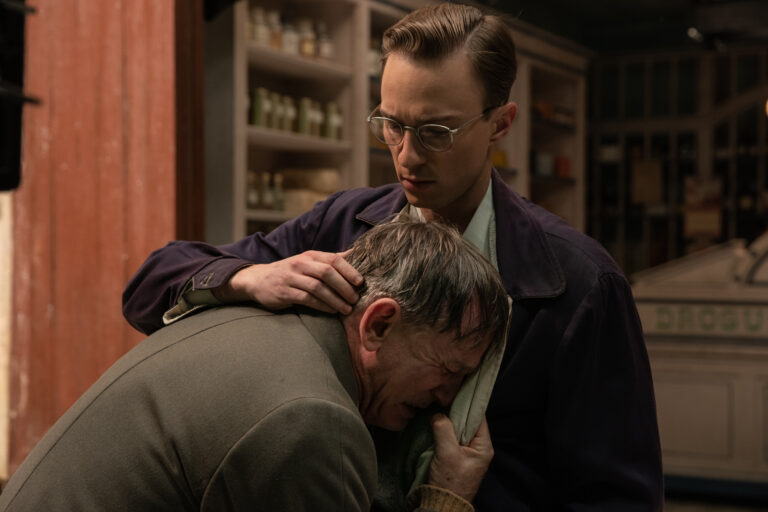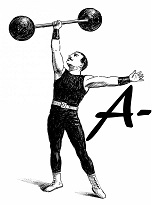It was in 1947 when English writer Malcolm Lowry’s acclaimed novel “Under the Volcano” was published. The book is about a British council named Geoffrey Firmin who resides in Quauhnahuac, Mexico, yet lives and breathes on the bottom of a bottle. He is slowly killing himself by drowning in alcohol. A bottle appears, and he becomes smaller in a constantly enlarging world. And on the day of the dead, his drunken ventures of melancholy and recognized damnation are ending. ‘Under the Volcano’ might be about substance abuse at its forefront. But the novel covers the topics of death, lust, regret, and isolation. Its setting becomes an expressionistic and haunting purgatory for the characters.
In Relation to Lowry’s ‘Under the Volcano’ and Burroughs’ ‘Queer’
Joy and sadness are at a great distance as the book reiterates its motif of chaos and unpredictability. “You can’t live without love” appears almost as an all-capitalized quote. This is the prayer for the main character’s salvation. It is a mantra that supposedly cures him from his troubled life. But he caves into the isolation, never changing his ways, and keeps on poisoning himself. Through a modern glance, the book shows a gnawing portrayal of our ever-growing solitude amidst a time slowly becoming more connected, our attempts at distracting and comforting ourselves from the lingering shadows of the back of the mind.
Our inability to fall in love. Our unavoidable deaths. The enclosure of opportunities drives us into our separate sea of exile in hopes of reaching an understanding of all of this chaos. Comfort is a shield for our irreparable vulnerability… The world we build for ourselves consumes us entirely and does not contain an open door for love. Coincidentally, during the years after ‘Under the Volcano’ had been released, William S. Burroughs wrote “Junkie” and “Queer,” two stories about a man, sullen from melancholy and isolation, who is undergoing substance abuse. Just like Firmin, William Lee, the central figure of these two Burroughs novels, was an addict birthed by depression, the anchor of psychological tolls and disruptive behavior.
One by the bottle, the other by the needle. Yet, the diligence to seek the caress of a person to hold onto–his saving grace from the devouring times riddled with desolation–eats him alive emotionally and psychologically. There is a connection between Lowery and Burrough’s scriptures. A timeless and highly relevant thematic thread connects them. Firmin and Lee go to great lengths to find what they seek in life. However, when we find Firmin, he is already a lost soul wandering in search of hell. There is still time for liberation and salvation for Lee to recover from his world of junk.
Luca Guadagnino Has a Big Task on His Hands
Tragic in their narrative thresholds yet beautiful in their subtext, “Under the Volcano” and William S. Burroughs’ literary “Double Bill” are complex pieces that become projections of the author’s lives, although with a touching moral about his connection and wasted time. Their layings linger through your soul as pages are read, making the reader ponder their existence and loneliness–the purgatory-like journey in search of love and deeper connection, an understanding of the soul, or something more carnal. Both worlds, set in Mexico at a time of despair (one before and the other after the war), are separate yet tied in poetic self-exploration and worldwide parallels. Firmin, Lee, the lost Yvonne, and the silent, disinterested Allerton… all succumb to a place slowly eating its inhabitants’ stability alive.
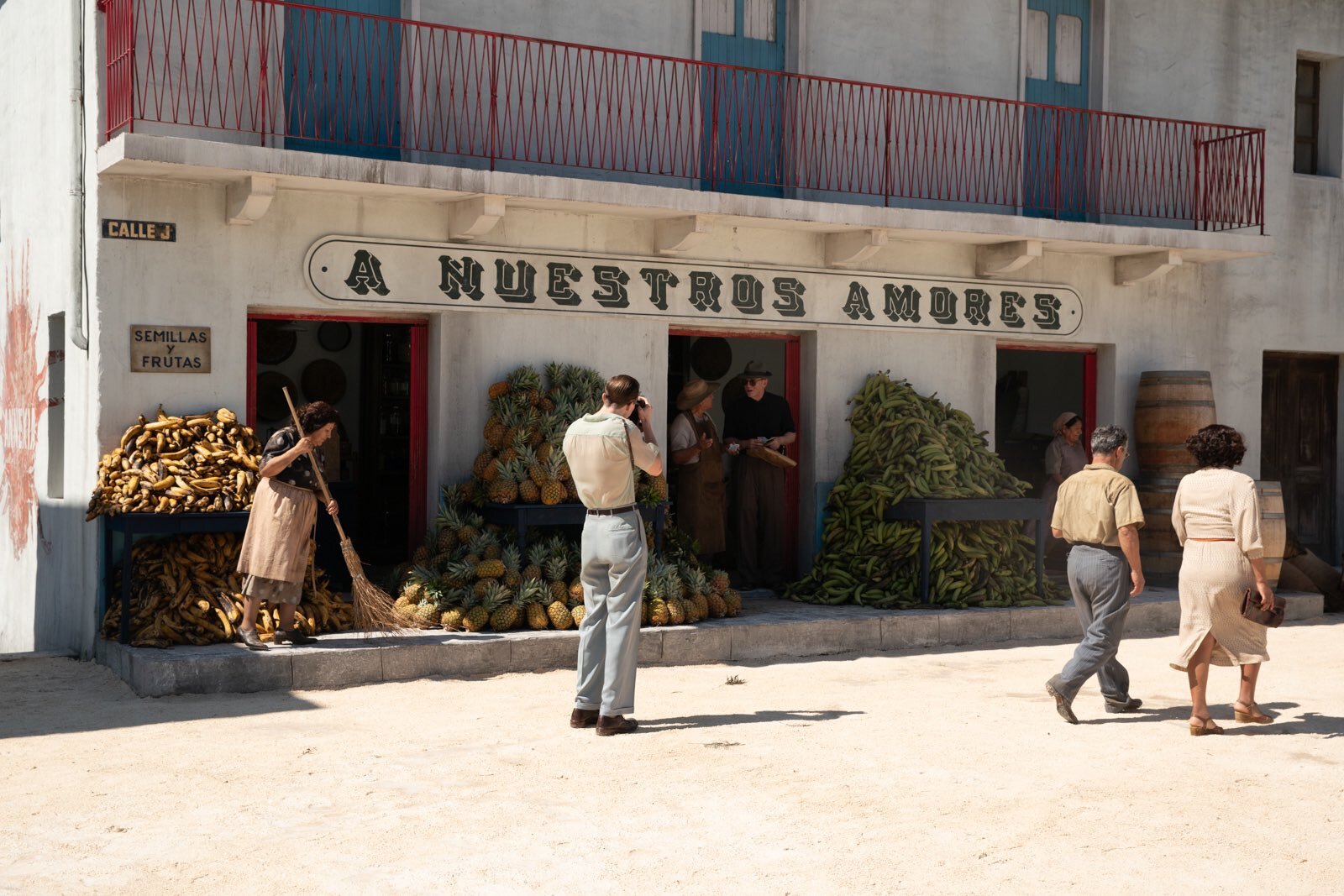
Lowry and Burroughs’ work is challenging to adapt to a cinematic format because of their fragmented prose and disjointed dialect. However, some filmmakers have stepped up to the task–most notably John Hughes and David Cronenberg–and made something cinematic from these writers’ oeuvre. The latest one to do so is Luca Guadagnino, adapting the aforementioned “Queer” in his voice while maintaining the damnation and sweaty passion of Burroughs’ novel. Although it is an adaptation, Gudagnino is making a film that is not only personal to him but also a portrait of the influential Beat Generation writer, desperateness, melancholy, and everything in between to an anachronistic soundtrack (featuring Nirvana, Prince, and New Order) that fills the solemnity to the current generation’s despondency.
Luca Guadagnino, known for his passionate tales about newly flamed love and doomed romances, has a big task. Burroughs never completed “Queer;” the novel has a space in between the transitions from boozy nights in Mexico to the travels in a South American jungle where Guadagnino can play with. There isn’t also an ending. Lee and Allerton’s ups and downs romantically don’t have a definite ending, nor should it have one due to it potentially ruining the novel’s crux and Burroughs’ unwritten vision: the hopeless pursuit of desire. The Italian filmmaker takes many bold swings and daring narrative movements that benefit the project and cement its ending as a potential closure for Lee. However, Lee still finds himself wounded by his steep footing in emotional and psychological purgatory for all these years afterward.
Stefano Baisi Crafts Edward Hopper-like Sets and Locations
There is also another layer to Guadagnino’s “Queer” (playing at this year’s NYFF as the Spotlight Gala); somehow, the essence of Malcolm Lowry’s “Under the Volcano” makes its way to the Italian filmmaker’s adaptation. You feel Firmin’s bottled emotions in Lee’s exasperation, one opening and the other closing–a needle injecting into the vein and a rum finished. Two pieces of literature conjoining mysteriously via the magic of cinema. Lee’s thirst for passion reflects the idea that “you can’t live without love.” Yet one of the most impactful lines in “Queer” intertwines with it. “In deep sadness, there is no place for sentimentality.”
“Queer” follows Lee (Daniel Craig, in top form) as Burroughs’ version of a junkie, an addict sullen even more by his drowning depression, going through withdrawal. Lee resides in Mexico City in search of pleasure and intimacy. As endless nights and fast-paced days pass, Lee is still on the prowl. But he is unable to fulfill that thirst he has for connection. As a distraction, he ventures through the different settings Guadagnino and production designer Stefano Baisi plant for him. Encounters, both failed and successful, drive his mind of his loneliness, aching previously, for which he reeks of desperation. And it is no coincidence that these locations (bars, cafes, restaurants, local shops) look like they were stripped away from an Edward Hopper painting.
Hopper explored loneliness and isolation within American urban and rural settings in his work. His subjects are mostly seen sitting alone, whether staring into the horizon by a window or having a coffee, where they ponder their own lives and make the viewer recognize the strangeness of familiar surroundings. But there’s a gloomy comfort to these paintings. You feel seen in them. Even if the settings are from the past, they become modernized in our minds. The look and design turn from the ’30s and ’40s to the present; the paintings turn into memories. There is a particular attachment, even if it’s riddled with melancholy. The predominant shadows of Hopper offer a bright light that speaks to all of us.
Lee’s First Glance at the Young Allerton
It may price your heart a bit, but this feeling drifts away in understanding and reflection. It is fascinating how Gudagnino and Baisi (unmistakably or mistakably) chose Hopper as the driving force for the background of his characters in “Queer” play and delve into their desires during the film’s first two strands. There are moments when Italian filmmaker and cinematographer Sayombhu Mukdeeprom shoots intimate scenes, and the characters’ bodies contort to form an Egon Schile-like painting—some of the actors’ facial features are similar to this painter’s subjects. His work is noted for its raw sexuality and intensity, which Guadagino is not afraid of hiding in his pictures, particularly this one, as in the characters’ expeditions, there is plenty of room for sweaty sex and plenty of vibrant passion.
Schile rejected what was, by that time, conventional ideas of beauty, marking his paintings with plenty of dark colors and limbs seen in distorted ways. However, upon reading more about him, I found out that he also covered the topics of depression, isolation, and the fear of death. The eyes of the person in the painting reflect these hidden emotions. Daniel Craig’s Lee has the same type of eyes and posture. He is always internally distorted, never composed, like Schiele’s portraits. His eyes show the trajectory of his past in the world of junk and his present fears of roaming through the world alone, without someone to caress him or tend to his emotional wounds. Craig has not done anything like this before. He feels like a chameleon. But not one that changes because of scenery. Instead, he tries to adapt to conquer the man he desires desperately.
Sometimes, he fails, which is shown in “Queer” in a critical scene where Lee is glancing and posing for the man at the other end of the bad. Yet, he fails miserably and goes back to the shots of rum to calm his nerves and erase the feeling. The predominant painter who served as an influence may be Hopper. But Guadagnino still weaves Schile’s presence into every passionate scene with tenderness. You can sense both of their works—which correlate in their thematic dissections of isolation in the 20th century—in a piercing manner through Lee and his desires. We see this the first time Lee lays his eyes on his next desire, a young Eugene Allerton (Drew Starkey).
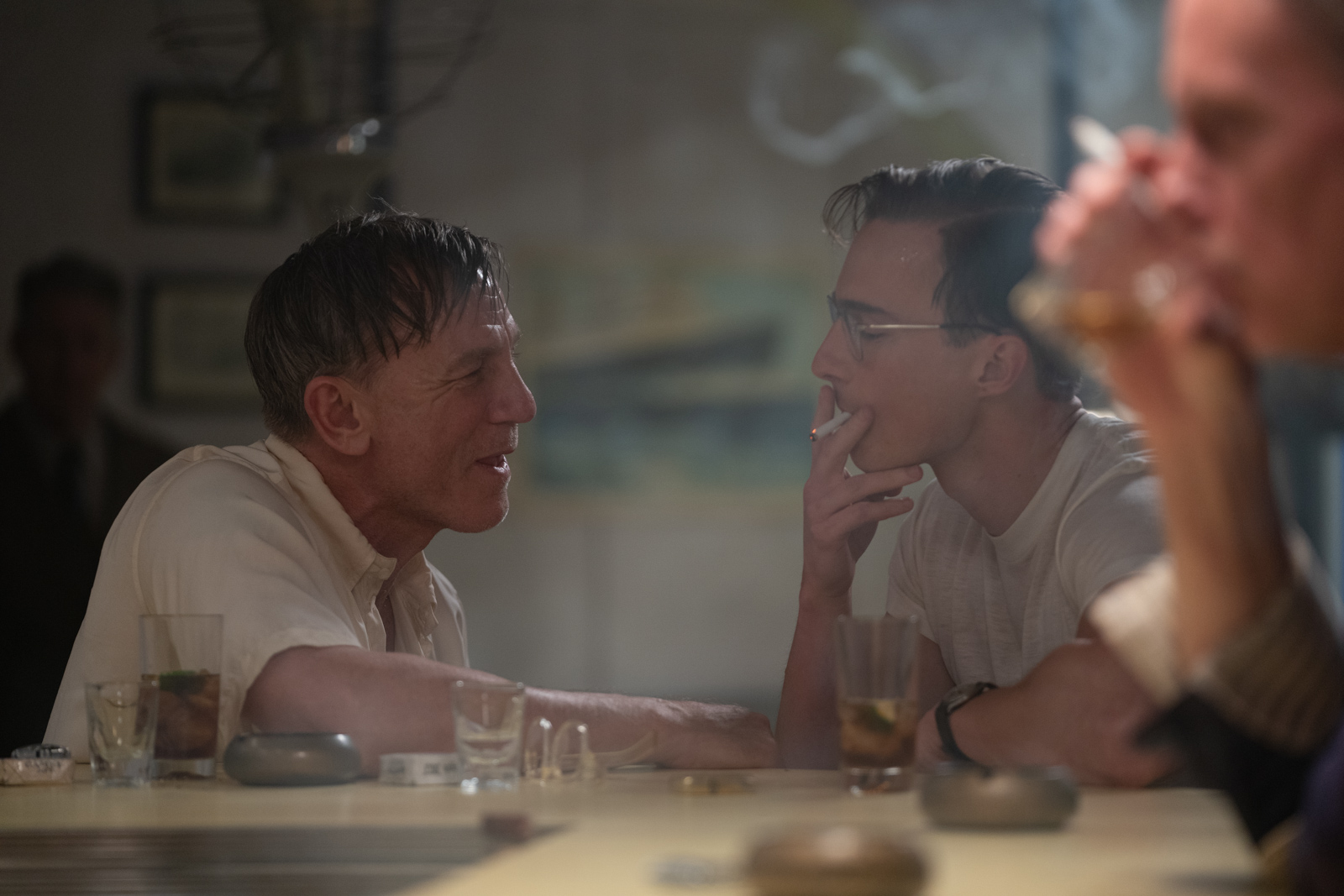
The bar where they cross paths evokes the look and feel of Hopper’s most recognized painting, “Nighthawks”. The painting portrays quiet contemplation and human connection in an ever-growing chaotic world. Like the painting, light comes from the bar’s lights. Everyone is in separate corners. They are alone or waiting for their company as the bartender prepares their drinks or shots of rum. Lee arrives all alone. And the magnetism of the silent yet beautiful figure that Allerton is in his eyes captivates him thoroughly. In a town with almost nothing to offer for him, turning into a limbo, Allerton’s presence becomes the main attraction. Lee’s infatuation is crystal clear, and he teases in hopes of allure.
The desperation in trying to hunt the delicate deer from afar and in his loneliness is noticeable. And then a thought goes through his mind. He begins to question Allerton’s orientation. Because his demeanor is calm and observant, Allerton is a mystery worth solving for Lee. The two actors, Craig and Starkey, express their respective characters’ outward personas with opposite approaches. The former relies on faux, suave brio, while the latter keeps a more restrained poise like a gazelle. But they keep their inner feelings under a guise. You see it in the slightest of hand movements, facial expressions, or quivers. At this point, we don’t know much about Allerton. However, as their bond strengthens, you see more of his inner self.
One Last Opportunity to Save this Aching Romance
Lee and Allerton couldn’t be any more different. They maintain this connection because of how drawn they are to each other. Passion blooms; Lee finally has something to hold on to. A love he has not had in years is helping him move forward. “You can’t live without love”, as Firmin would say. Lowery’s words travel from one book to another and go to Guadagnino’s adaptation of Burrough’s. It echoes throughout the film, even more so when Allerton becomes disinterested in the character. He grows tired of the routine schedule of drunken nights, midnight hookups, and the crazy stories Lee tells to impress. However, in such acts of impression, Lee loses the only person who has connected with him on a profound level.
To secure it to a safe spot, Lee asks Allerton to go on a trip to South America in search of a hallucinogenic plant called yage (or ayahuasca). He believes that his substance will help him with his addictions and the relationship he wants to hold dear. The plant supposedly has telepathic abilities that can connect the minds of its takers. This is his last resort. This escapade determines how everything in the relationship will function. Deep into the jungle they go. Their minds, bodies, and souls traverse a surrealistic space of dream-like and passionate incantations. Lee and Allerton go on the path that the isolated botanist, Dr. Alice Cochran (Lesley Manville), tells them.
She is the guide to their salvation or extended purgatory. It is the living hell Firmin described in his bar-hopping and bottle-washing ventures of broken-hearted, hopeless romantics. In each connection Lee has with Allerton, Guadagnino touches on a personal past, an experience not quite similar yet felt otherwise. At the same time, we traverse through Burroughs’ mind with Lee’s walkabouts. There’s a duality to the expedition. It is treated as a separate narrative device apart from the literal novel adaptation, taking real-life experiences of the authors and Guadagnino himself into the characters’ perceptions of love and melancholy, all done with plenty of confidence, even in the narrative’s most rocky of turns in the third act.
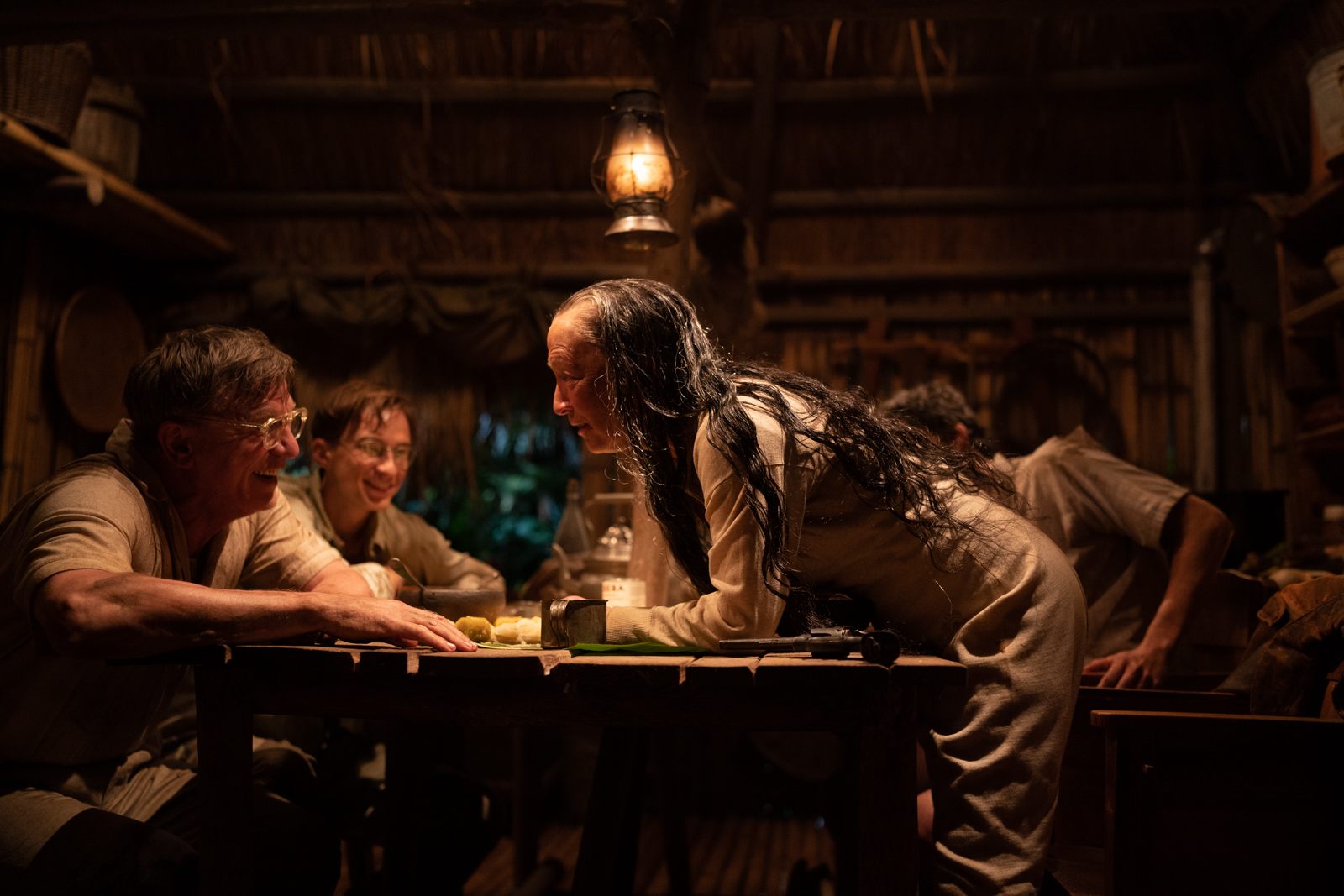
An Intoxicating Story That Has Craig Chanelling Lee, Burroughs, and Firmin
The intoxicating story handles itself occasionally as Craig becomes Lee and Burroughs while Firmin retaliates in his backbone. Guadagnino plays with the setting. He places them aflame via a torturous gloom that shadows the protagonist to forge a way of wandering exaltation of overbearing pain induced by the lack of deep intimacy. The Italian filmmaker creates beauty through sadness and euphoria in the few moments of happiness scattered throughout the runtime. It is a sensor that most of the films in his filmography have scenes that call back to “Call Me By Your Name” and “A Big Splash.” “Queer” culminates as a captivating piece of male loneliness through a vessel of junk and affinity, what’s left after the withdrawal or inebriety.
There is a strong feeling emerging from it when the climax arrives, considering that Burroughs never completed writing “Queer” and released it thirty-four years later. So, Guadagnino had the task of defining the undefinable with his gentle, occasionally purposefully cold hand. Some of his choices dictate how Lee, through the mind, body, and soul of Burroughs and men in general, is consumed by his desires. “Bones and All” had that feeling of consumption as a form of pleasing the appetite for connection and intimacy. Whereas in “Queer” it’s drugs and the breath on your neck from another man, where the Timothee Chalamet and Taylor Russel-starring picture did with cannibalism.
Nevertheless, both are equally heart-rending and spiritual in their own right. Guadagnino has always had this power to capture raw emotions in worlds that look lavish–out of our normalcy–or distant. His scattered feelings slowly come together to form the puzzle of his passionate vision. There is only one missing piece. What will the viewer bring to it? What will they provide with their experiences, insecurities, and lost love? And “Queer” is another stirring example from Guadagnino.
“Queer” screened in the Spotlight section of this year’s New York Film Festival. The film will have a limited U.S. theatrical release on December 10th, 2024.

